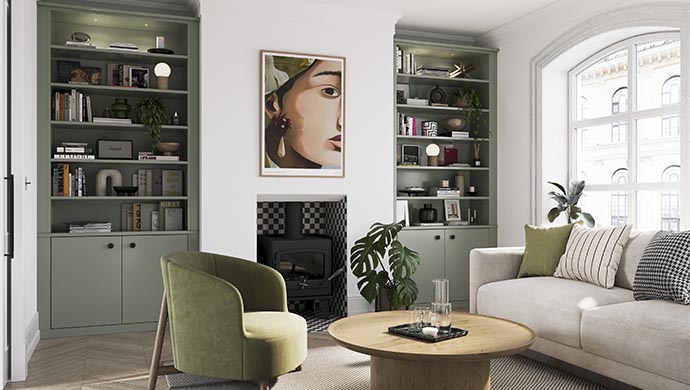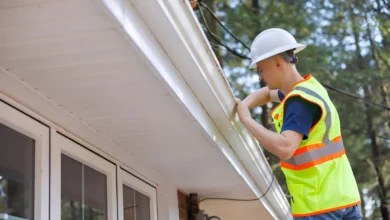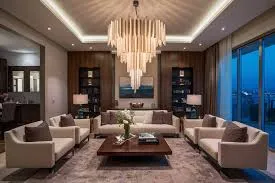Manhattan’s Interior Design Evolution: From Classic to Contemporary

Manhattan’s interior design landscape tells a captivating story of transformation. From the gilded mansions of the Upper East Side to the industrial lofts of SoHo, the borough’s design aesthetic has continuously evolved to reflect changing lifestyles, cultural shifts, and architectural innovations.
Understanding this evolution isn’t just about appreciating history—it reveals why Manhattan remains the epicenter of cutting-edge interior design services. The city’s unique architectural heritage, combined with its role as a global cultural hub, has created an environment where traditional elegance meets contemporary innovation. This dynamic has shaped not only how New Yorkers live but also how interior design services in Manhattan have adapted to meet the diverse needs of residents in one of the world’s most competitive real estate markets.
For anyone considering an interior design project in Manhattan, recognizing these historical influences and contemporary trends provides valuable insight into creating spaces that honor the city’s rich design legacy while embracing modern functionality.
The Foundation: Manhattan’s Pre-War Elegance
Manhattan’s design DNA was established during the pre-war era, roughly spanning from 1900 to 1940. This period gave birth to some of the city’s most iconic residential buildings, from the ornate Beaux-Arts apartments along Central Park West to the Art Deco masterpieces in Midtown.
Pre-war apartments featured high ceilings, crown molding, hardwood floors, and generous room proportions that interior designers still celebrate today. These architectural elements created a template for luxury living that continues to influence contemporary design decisions. The emphasis on craftsmanship, quality materials, and attention to detail established standards that modern interior design services in Manhattan still reference and reinterpret.
The color palettes of this era favored rich, deep tones—burgundy, forest green, and navy blue—often accented with gold details. Furniture emphasized substantial pieces with classical proportions, while textiles featured heavy damasks and brocades. This foundation of elegance and sophistication became synonymous with Manhattan living.
Mid-Century Modern: The Shift Toward Simplicity
The post-World War II era brought dramatic changes to Manhattan’s design sensibilities. The 1950s and 1960s introduced mid-century modern aesthetics that emphasized clean lines, functional furniture, and a more relaxed approach to formal living.
This period saw the rise of open floor plans, built-in storage solutions, and the integration of new materials like chrome, glass, and molded plastics. Manhattan residents began embracing furniture from designers like Charles and Ray Eames, whose innovative pieces offered both style and practicality—essential qualities for city living.
Color schemes lightened considerably during this era. Neutral backgrounds were punctuated with bold accent colors—orange, turquoise, and yellow—reflecting the optimistic spirit of the times. This shift toward brighter, more casual interiors represented a departure from the formal, traditional styles that had previously dominated Manhattan homes.
The influence of mid-century modern design extended beyond aesthetics to embrace new lifestyle concepts. Open kitchens, conversation areas, and multipurpose spaces reflected changing social patterns and the increasing informality of urban life.
The Minimalist Movement: Less Becomes More
The 1980s and 1990s witnessed Manhattan’s embrace of minimalism, a movement that resonated particularly well with the city’s space constraints and fast-paced lifestyle. This design philosophy emphasized the elimination of excess, focusing instead on essential elements and high-quality materials.
Minimalist interiors featured neutral color palettes dominated by whites, grays, and blacks. Furniture selections favored pieces with clean geometric forms, while decorative elements were carefully curated rather than abundant. This approach created a sense of calm and order that provided refuge from the intensity of urban life.
The movement coincided with the conversion of industrial spaces into residential lofts, particularly in neighborhoods like SoHo and Tribeca. These raw spaces, with their exposed brick walls, concrete floors, and industrial fixtures, provided the perfect canvas for minimalist design principles.
Interior design services in Manhattan during this period focused on maximizing space efficiency while maintaining aesthetic sophistication. Built-in storage solutions, multi-functional furniture, and strategic lighting became essential elements of successful urban living.
Contemporary Fusion: Blending Old and New
The 21st century has brought a more eclectic approach to Manhattan interior design, characterized by the thoughtful blending of different periods and styles. This contemporary fusion approach allows residents to honor their apartments’ architectural heritage while incorporating modern amenities and personal preferences.
Current trends favor mixing vintage and contemporary pieces, combining different textures and materials, and creating spaces that feel both sophisticated and livable. A pre-war apartment might feature restored original hardwood floors alongside contemporary Italian furniture, or a modern loft might incorporate antique Persian rugs and mid-century lighting fixtures.
This approach reflects Manhattan’s diverse population and the global influences that shape the city’s culture. Interior design services now commonly work with clients to create spaces that reflect individual backgrounds and experiences while respecting the architectural context of their homes.
Color palettes have become more varied and personal, moving away from strict adherence to single-period schemes. Many contemporary Manhattan interiors feature sophisticated neutral backgrounds that allow artwork, textiles, and accent pieces to provide personality and warmth.
Technology Integration and Smart Living
Recent years have seen the seamless integration of technology into Manhattan interior design. Smart home systems, hidden wiring, and multifunctional spaces that accommodate remote work have become standard considerations for interior design services.
The challenge lies in incorporating these technological necessities without compromising aesthetic appeal. Successful contemporary designs hide technology when possible and integrate it thoughtfully when concealment isn’t feasible.
Climate control, lighting systems, entertainment centers, and security features now require careful planning during the design process. The most successful projects create spaces where technology enhances daily life without becoming visually dominant.
Sustainability and Conscious Design
Environmental consciousness has significantly influenced contemporary Manhattan interior design. Sustainable materials, energy-efficient systems, and vintage or restored furniture have gained prominence among environmentally aware residents.
This trend extends beyond materials to encompass design longevity. Rather than following short-term trends, many clients now prefer classic pieces and timeless design elements that won’t require frequent updating. This approach aligns with both environmental goals and the practical realities of Manhattan living, where major renovations can be complex and expensive.
Local sourcing when possible, the restoration of existing architectural elements, and the selection of durable, high-quality materials represent both environmental responsibility and design sophistication.
Looking Forward: The Future of Manhattan Design
As Manhattan continues to evolve, several trends are shaping the future of interior design services. Flexibility has become paramount, with spaces designed to serve multiple functions as lifestyle needs change. The pandemic accelerated demand for home offices, wellness spaces, and areas that support various activities throughout the day.
Biophilic design elements—incorporating natural materials, plants, and connections to outdoor spaces—have gained importance as residents seek to balance urban living with nature connections. Even small Manhattan apartments now commonly feature green walls, natural materials, and access to outdoor spaces when available.
The integration of global influences continues to expand, reflecting Manhattan’s international population and cultural connections. Interior design services increasingly work with clients to incorporate elements from their cultural backgrounds while maintaining cohesion with New York’s design traditions.
The Enduring Appeal of Manhattan Design
Interior design services in Manhattan empower residents to transform their homes by blending timeless architectural details with modern sophistication. Manhattan’s interior design evolution reflects a unique balance of honoring heritage while embracing innovation, creating spaces that are both functional and inspiring..
The concentration of talented designers, access to world-class furnishings and materials, and exposure to global design trends ensure that Manhattan remains at the forefront of interior design innovation. Whether working with a pre-war classic or a contemporary new construction, interior design services in Manhattan draw from this rich history while addressing the practical needs of modern urban living.
For residents considering interior design projects, understanding this evolutionary context provides a valuable perspective on creating spaces that feel both timeless and contemporary—a hallmark of successful Manhattan interior design that honors the past while embracing the future.
Contact Info
Name: D2 Design and Works
Address: 165 W End Ave #1K, New York, NY 10023
Email: info@d2designandworks.com
Phone: (212) 873-7272
Website: https://www.d2designandworks.com/
Embed




